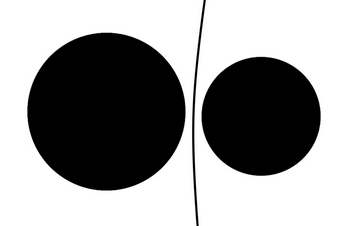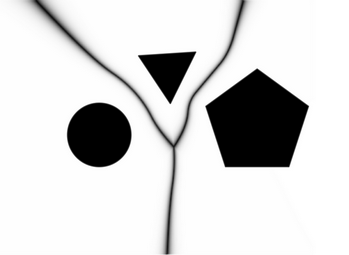Bisector curve
This activity belongs to the GeoGebra book Voronoi Paintings.
Let's stop considering the sites as point objects. Now they are isolated planar shapes. What will be the equivalent route to the Voronoi diagram, that is, where will be the points in the plane that are equidistant from the nearest sites to them?
To begin with, let's consider only two circular sites. If both circles have the same radius, the perpendicular bisector of their centers again solves the question. But if they have different radii, the bisector will curve into a branch of a hyperbola, closest to the smaller circle (Figure 2).

Figure 2: Branch of a hyperbola equidistant from two circles
Figure 2: Branch of a hyperbola equidistant from two circles
- Between circles (or points): perpendicular bisectors and hyperbolas.
- Between lines: angle bisectors.
- Between lines and circles (or points): parabolas.

Figure 3: Voronoi diagram of three planar shapes
Figure 3: Voronoi diagram of three planar shapes